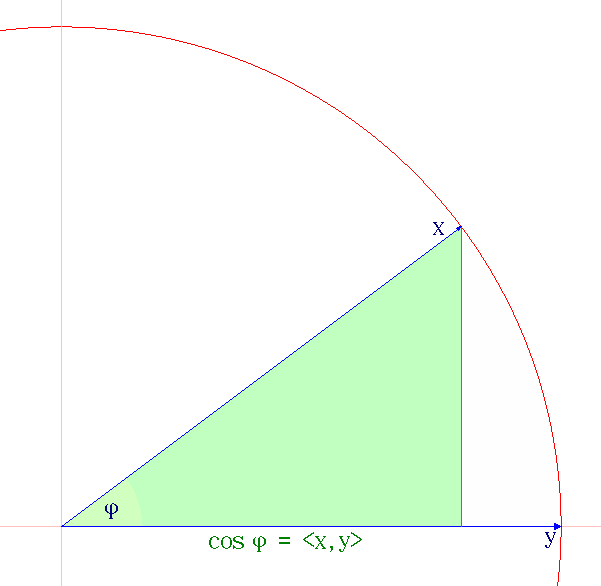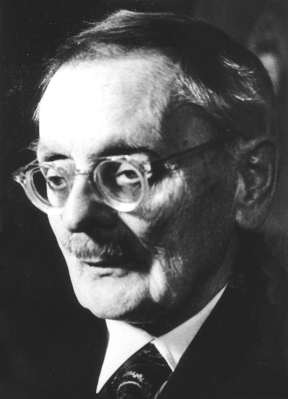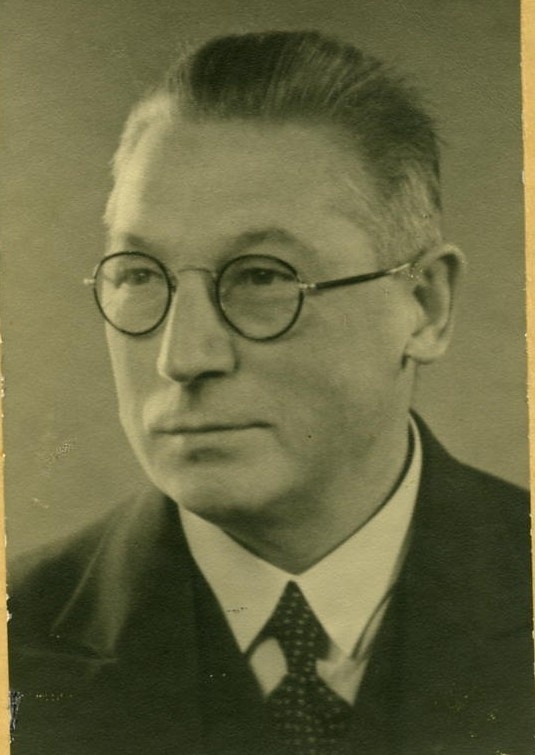|
H. A. Schwarz
Karl Hermann Amandus Schwarz (; 25 January 1843 – 30 November 1921) was a German mathematician, known for his work in complex analysis. Life Schwarz was born in Hermsdorf, Silesia (now Jerzmanowa, Poland). In 1868 he married Marie Kummer, who was the daughter to the mathematician Ernst Eduard Kummer and Ottilie née Mendelssohn (a daughter of Nathan Mendelssohn's and granddaughter of Moses Mendelssohn). Schwarz and Kummer had six children, including his daughter Emily Schwarz. Schwarz originally studied chemistry in Berlin but Ernst Eduard Kummer and Karl Theodor Wilhelm Weierstrass persuaded him to change to mathematics. He received his Ph.D. from the Universität Berlin in 1864 and was advised by Kummer and Weierstrass. Between 1867 and 1869 he worked at the University of Halle, then at the Swiss Federal Polytechnic. From 1875 he worked at Göttingen University, dealing with the subjects of complex analysis, differential geometry and the calculus of variations ... [...More Info...] [...Related Items...] OR: [Wikipedia] [Google] [Baidu] |
Hermsdorf (Silesia)
Jerzmanowa (; german: Hermsdorf, ) is a village in Głogów County, Lower Silesian Voivodeship, in south-western Poland. It is the seat of the administrative district ( gmina) called Gmina Jerzmanowa. The village has an approximate population of 600. It lies approximately south of Głogów, and north-west of the regional capital Wrocław. History In his 1800 tour of Silesia, future President John Quincy Adams referred to the Silesian village of Hermsdorf in Letters on Silesia (letter VII, 1 August 1800). He notes that the village is at the foot of the Kynast, "one of the most celebrated Silesian hills." At the top of the Kynast, was the ruins of an old castle supposedly built in 1292 by the ancestor of Count Schafgotsch, and abandoned in 1670 due to a fire from a lightning strike. There was also a log book at the time kept of those who climbed the hill and wished to sign it for posterity. Notable people * Charles Gotthold Reichel (1751-1825), bishop * Hermann Schwarz ... [...More Info...] [...Related Items...] OR: [Wikipedia] [Google] [Baidu] |
Gerhard Hessenberg
Gerhard Hessenberg (16 August 1874 – 16 November 1925) was a German mathematician who worked in projective geometry, differential geometry, and set theory. Career Hessenberg received his Ph.D. from the University of Berlin in 1899 under the guidance of Hermann Schwarz and Lazarus Fuchs. His name is usually associated with projective geometry, where he is known for proving that Desargues' theorem is a consequence of Pappus's hexagon theorem, and differential geometry where he is known for introducing the concept of a connection. He was also a set theorist: the Hessenberg sum and product of ordinals are named after him. However, Hessenberg matrices are named for Karl Hessenberg, a near relative. In 1908 Gerhard Hessenberg was an Invited Speaker of the International Congress of Mathematicians The International Congress of Mathematicians (ICM) is the largest conference for the topic of mathematics. It meets once every four years, hosted by the International Mathematical ... [...More Info...] [...Related Items...] OR: [Wikipedia] [Google] [Baidu] |
Jerzmanowa
Jerzmanowa (; german: Hermsdorf, ) is a village in Głogów County, Lower Silesian Voivodeship, in south-western Poland. It is the seat of the administrative district ( gmina) called Gmina Jerzmanowa. The village has an approximate population of 600. It lies approximately south of Głogów, and north-west of the regional capital Wrocław. History In his 1800 tour of Silesia, future President John Quincy Adams referred to the Silesian village of Hermsdorf in Letters on Silesia (letter VII, 1 August 1800). He notes that the village is at the foot of the Kynast, "one of the most celebrated Silesian hills." At the top of the Kynast, was the ruins of an old castle supposedly built in 1292 by the ancestor of Count Schafgotsch, and abandoned in 1670 due to a fire from a lightning strike. There was also a log book at the time kept of those who climbed the hill and wished to sign it for posterity. Notable people * Charles Gotthold Reichel (1751-1825), bishop * Hermann Schwarz ... [...More Info...] [...Related Items...] OR: [Wikipedia] [Google] [Baidu] |
Austrian Silesia
Austrian Silesia, (historically also ''Oesterreichisch-Schlesien, Oesterreichisch Schlesien, österreichisch Schlesien''); cs, Rakouské Slezsko; pl, Śląsk Austriacki officially the Duchy of Upper and Lower Silesia, (historically ''Herzogthum Ober- und Niederschlesien''); cs, Vévodství Horní a Dolní Slezsko; pl, Księstwo Górnego i Dolnego Śląska was an autonomous region of the Kingdom of Bohemia and the Habsburg monarchy (from 1804 the Austrian Empire, and from 1867 Cisleithanian Austria-Hungary). It is largely coterminous with the present-day region of Czech Silesia and was, historically, part of the larger Silesia region. Geography Austrian Silesia consisted of two territories, separated by the Moravian land strip of Moravská Ostrava between the Ostravice and Oder rivers. The area east of the Ostravice around Cieszyn reached from the heights of the Western Carpathians ( Silesian Beskids) in the south, where it bordered with the Kingdom of Hungary, along ... [...More Info...] [...Related Items...] OR: [Wikipedia] [Google] [Baidu] |
Complex Analysis
Complex analysis, traditionally known as the theory of functions of a complex variable, is the branch of mathematical analysis that investigates Function (mathematics), functions of complex numbers. It is helpful in many branches of mathematics, including algebraic geometry, number theory, analytic combinatorics, applied mathematics; as well as in physics, including the branches of hydrodynamics, thermodynamics, and particularly quantum mechanics. By extension, use of complex analysis also has applications in engineering fields such as nuclear engineering, nuclear, aerospace engineering, aerospace, mechanical engineering, mechanical and electrical engineering. As a differentiable function of a complex variable is equal to its Taylor series (that is, it is Analyticity of holomorphic functions, analytic), complex analysis is particularly concerned with analytic functions of a complex variable (that is, holomorphic functions). History Complex analysis is one of the classical ... [...More Info...] [...Related Items...] OR: [Wikipedia] [Google] [Baidu] |
Mathematician
A mathematician is someone who uses an extensive knowledge of mathematics in their work, typically to solve mathematical problems. Mathematicians are concerned with numbers, data, quantity, structure, space, models, and change. History One of the earliest known mathematicians were Thales of Miletus (c. 624–c.546 BC); he has been hailed as the first true mathematician and the first known individual to whom a mathematical discovery has been attributed. He is credited with the first use of deductive reasoning applied to geometry, by deriving four corollaries to Thales' Theorem. The number of known mathematicians grew when Pythagoras of Samos (c. 582–c. 507 BC) established the Pythagorean School, whose doctrine it was that mathematics ruled the universe and whose motto was "All is number". It was the Pythagoreans who coined the term "mathematics", and with whom the study of mathematics for its own sake begins. The first woman mathematician recorded by history was Hyp ... [...More Info...] [...Related Items...] OR: [Wikipedia] [Google] [Baidu] |
Germans
, native_name_lang = de , region1 = , pop1 = 72,650,269 , region2 = , pop2 = 534,000 , region3 = , pop3 = 157,000 3,322,405 , region4 = , pop4 = 21,000 3,000,000 , region5 = , pop5 = 125,000 982,226 , region6 = , pop6 = 900,000 , region7 = , pop7 = 142,000 840,000 , region8 = , pop8 = 9,000 500,000 , region9 = , pop9 = 357,000 , region10 = , pop10 = 310,000 , region11 = , pop11 = 36,000 250,000 , region12 = , pop12 = 25,000 200,000 , region13 = , pop13 = 233,000 , region14 = , pop14 = 211,000 , region15 = , pop15 = 203,000 , region16 = , pop16 = 201,000 , region17 = , pop17 = 101,000 148,00 ... [...More Info...] [...Related Items...] OR: [Wikipedia] [Google] [Baidu] |
Cauchy–Schwarz Inequality
The Cauchy–Schwarz inequality (also called Cauchy–Bunyakovsky–Schwarz inequality) is considered one of the most important and widely used inequalities in mathematics. The inequality for sums was published by . The corresponding inequality for integrals was published by and . Schwarz gave the modern proof of the integral version. Statement of the inequality The Cauchy–Schwarz inequality states that for all vectors \mathbf and \mathbf of an inner product space it is true that where \langle \cdot, \cdot \rangle is the inner product. Examples of inner products include the real and complex dot product; see the examples in inner product. Every inner product gives rise to a norm, called the or , where the norm of a vector \mathbf is denoted and defined by: \, \mathbf\, := \sqrt so that this norm and the inner product are related by the defining condition \, \mathbf\, ^2 = \langle \mathbf, \mathbf \rangle, where \langle \mathbf, \mathbf \rangle is always a non-negativ ... [...More Info...] [...Related Items...] OR: [Wikipedia] [Google] [Baidu] |
Ernst Zermelo
Ernst Friedrich Ferdinand Zermelo (, ; 27 July 187121 May 1953) was a German logician and mathematician, whose work has major implications for the foundations of mathematics. He is known for his role in developing Zermelo–Fraenkel axiomatic set theory and his proof of the well-ordering theorem. Furthermore, his 1929 work on ranking chess players is the first description of a model for pairwise comparison that continues to have a profound impact on various applied fields utilizing this method. Life Ernst Zermelo graduated from Berlin's Luisenstädtisches Gymnasium (now ) in 1889. He then studied mathematics, physics and philosophy at the University of Berlin, the University of Halle, and the University of Freiburg. He finished his doctorate in 1894 at the University of Berlin, awarded for a dissertation on the calculus of variations (''Untersuchungen zur Variationsrechnung''). Zermelo remained at the University of Berlin, where he was appointed assistant to Planck, under who ... [...More Info...] [...Related Items...] OR: [Wikipedia] [Google] [Baidu] |
Theodor Vahlen
Karl Theodor Vahlen (30 June 1869 – 16 November 1945) was an Austrian-born mathematician and professor who was a member of the Nazi Party. He served as the first ''Gauleiter'' of Pomerania and was a member of both the SA and SS. Early years Theodore Vahlen was born in Vienna, the son of a German classical philologist Johannes Vahlen (1830–1911). He went to ''volksschule'' and gymnasium in Berlin before studying mathematics at the University of Berlin and receiving his doctorate there in 1893. From 1893, Vahlen was a ''Privatdozent'' in mathematics at the Königsberg Albertina University. In 1904, he began teaching at the University of Greifswald, and in 1911 he became an ordinarius professor there. He entered military service at the beginning of World War I with the rank of ''Hauptmann'' in the 68th (6th Royal Saxon) Field Artillery Regiment. He was an artillery battery commander on the western front (1914-1915) and the eastern front (1916-1917). Wounded in action o ... [...More Info...] [...Related Items...] OR: [Wikipedia] [Google] [Baidu] |
Rudolf Rothe
Rudolf Ernst Rothe (15 October 1873, Berlin – 26 October 1942, Berlin) was a German applied mathematician. Biography After graduating from the Sophien-Gymnasium in Berlin, Rothe studied from 1892 under Hermann Amandus Schwarz, Johannes Knoblauch, Lazarus Immanuel Fuchs, and Ferdinand Georg Frobenius at the Humboldt University of Berlin. There in 1897 he received his ''Promotion'' (Ph.D.) with dissertation ''Untersuchungen über die Theorie der isothermal Flächen'' (Investigations on the theory of isothermal surfaces) supervised by Schwarz. In 1905 Rothe completed his habilitation at the ''Technische Hochschule Berlin-Charlottenburg'' ( Technical University of Berlin). He was a professor from 1908 to 1914 at the Clausthal University of Technology (TU Claustral) and from 1914 to 1915 at the ''Technische Hochschule Hanover'' ( University of Hanover), where he founded the Institute for Applied Mathematics. From 1915 he was a professor at the Technical University of Berlin, where ... [...More Info...] [...Related Items...] OR: [Wikipedia] [Google] [Baidu] |
Robert Remak (mathematician)
Robert Erich Remak (14 February 1888 – 13 November 1942) was a German mathematician. He is chiefly remembered for his work in group theory ( Remak decomposition). His other interests included algebraic number theory, mathematical economics and geometry of numbers. Robert Remak was the son of the neurologist Ernst Julius Remak and the grandson of the embryologist Robert Remak. Biography Robert Remak was born in Berlin. He studied at Humboldt University of Berlin under Ferdinand Georg Frobenius and received his doctorate in 1911. His dissertation, ''Über die Zerlegung der endlichen Gruppen in indirekte unzerlegbare Faktoren'' ("On the decomposition of a finite group into indirect indecomposable factors") established that any two decompositions of a finite group into a direct product are related by a central automorphism. A weaker form of this statement, uniqueness, was first proved by Joseph Wedderburn in 1909. Later the theorem was generalized by Wolfgang Krull and Otto S ... [...More Info...] [...Related Items...] OR: [Wikipedia] [Google] [Baidu] |






